Search the Special Collections and Archives Portal
Search Results
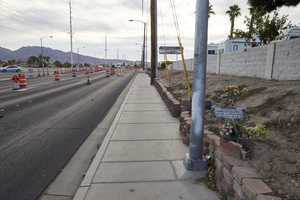
Construction traffic cones and RV park on East Sahara Avenue west of Lamb Boulevard, looking east, Las Vegas, Nevada: digital photograph
Date
2017-09-26
Archival Collection
Description
Construction traffic cones sit on East Sahara Avenue west of Lamb Boulevard. The Maycliff RV & Mini Storage Park occupies the land on the south side of Sahara in this section.
Image
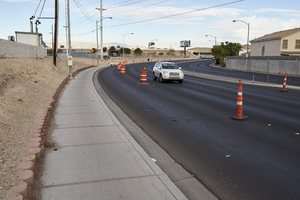
Car and trafic cones on East Sahara Avenue west of Lamb Boulevard, looking west, Las Vegas, Nevada: digital photograph
Date
2017-09-26
Archival Collection
Description
A car navigates through the traffic cones situated on East Sahara Avenue west of Lamb Boulevard.
Image
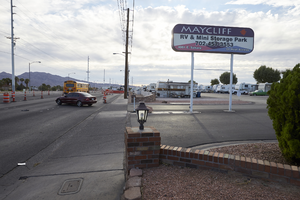
Maycliff RV & Mini Storage Park entrance on East Sahara Avenue west of Lamb Boulevard, looking east, Las Vegas, Nevada: digital photograph
Date
2017-09-26
Archival Collection
Description
An entrance to the Maycliff RV & Mini Storage Park sits along East Sahara Avenue west of Lamb Boulevard.
Image

Maycliff RV & Mini Storage Park wall on East Sahara Avenue west of Lamb Boulevard, looking east, Las Vegas, Nevada: digital photograph
Date
2017-09-26
Archival Collection
Description
A wall separates the Maycliff RV & Mini Storage Park and East Sahara Avenue west of Lamb Boulevard.
Image
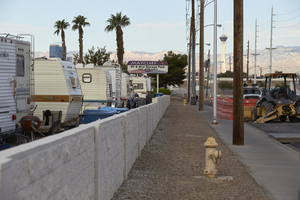
Maycliff RV & Mini Storage Park wall on East Sahara Avenue west of Lamb Boulevard, looking west, Las Vegas, Nevada: digital photograph
Date
2017-09-26
Archival Collection
Description
A wall separates the Maycliff RV & Mini Storage Park and East Sahara Avenue west of Lamb Boulevard.
Image
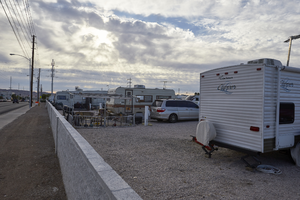
Maycliff RV & Mini Storage Park wall on East Sahara Avenue west of Lamb Boulevard, looking east, Las Vegas, Nevada: digital photograph
Date
2017-09-26
Archival Collection
Description
A wall separates the Maycliff RV & Mini Storage Park and East Sahara Avenue west of Lamb Boulevard.
Image
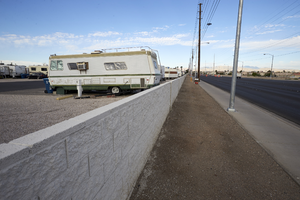
Maycliff RV & Mini Storage Park wall on East Sahara Avenue west of Lamb Boulevard, looking west, Las Vegas, Nevada: digital photograph
Date
2017-09-26
Archival Collection
Description
A wall separates the Maycliff RV & Mini Storage Park and East Sahara Avenue west of Lamb Boulevard.
Image
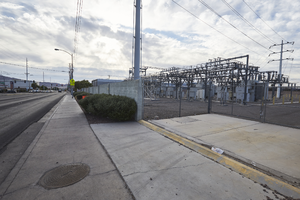
NV Energy Sahara Substation on East Sahara Avenue west of Lamb Boulevard, looking east, Las Vegas, Nevada: digital photograph
Date
2017-09-26
Archival Collection
Description
NV Energy's Sahara Substation located on East Sahara Avenue west of Lamb Boulevard.
Image
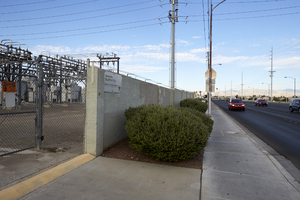
NV Energy Sahara Substation on East Sahara Avenue west of Lamb Boulevard, looking west, Las Vegas, Nevada: digital photograph
Date
2017-09-26
Archival Collection
Description
NV Energy's Sahara Substation sits along East Sahara Avenue west of Lamb Boulevard.
Image
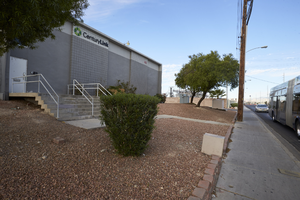
Century Link building on East Sahara Avenue and Lamb Boulevard, Las Vegas, Nevada: digital photograph
Date
2017-09-26
Archival Collection
Description
A Century Link building occupies the southwest corner of East Sahara Avenue and Lamb Boulevard.
Image
Pagination
Refine my results
Content Type
Creator or Contributor
Subject
Archival Collection
Digital Project
Resource Type
Year
Material Type
Place
Language
Records Classification
